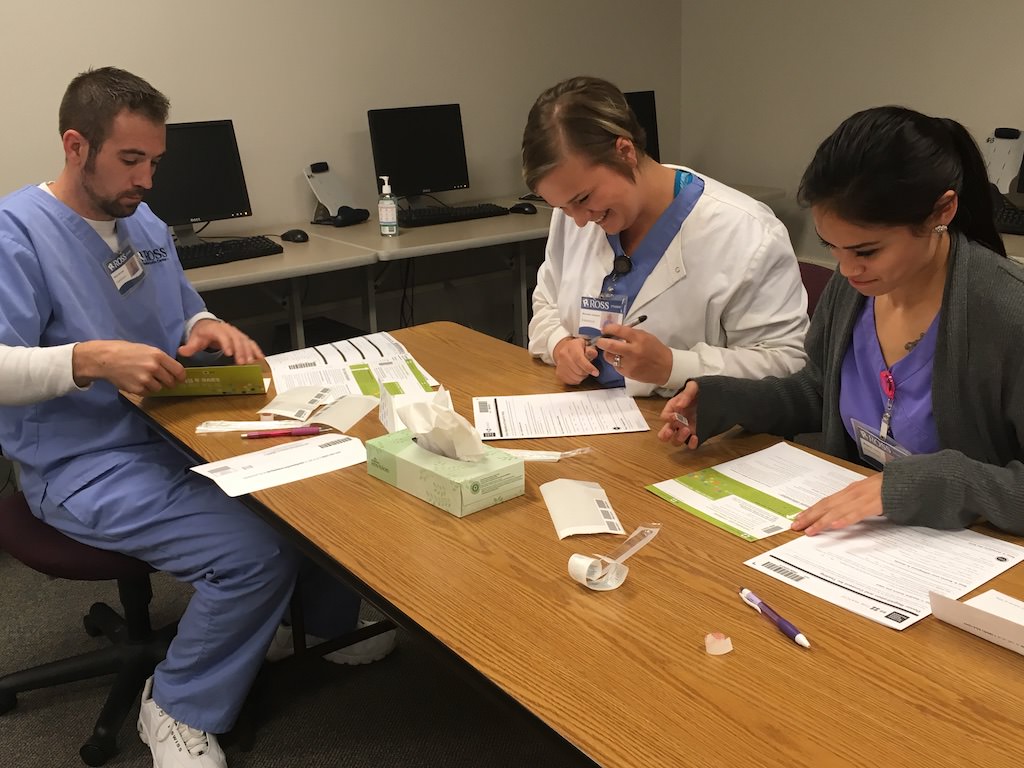 This June, the Port Huron, Michigan campus of Ross Medical Education Center welcomed Mackenzie VanDerWarf, a representative from Michigan Blood, which is part of the National Marrow Donors Program’s Be the Match registry. Each year, over 14,000 people are diagnosed with life-threatening blood cancers like leukemia and lymphoma. Their diseases may be cured through a bone marrow transplant if a perfect match can be found. However, only 30% of patients find a familial match. The remaining patients must turn to the donor registry, and that’s where Be the Match steps in. They not only help match patients with unrelated donors, but they also stand by to support and assist both the donor and the recipient through the entire process.
This June, the Port Huron, Michigan campus of Ross Medical Education Center welcomed Mackenzie VanDerWarf, a representative from Michigan Blood, which is part of the National Marrow Donors Program’s Be the Match registry. Each year, over 14,000 people are diagnosed with life-threatening blood cancers like leukemia and lymphoma. Their diseases may be cured through a bone marrow transplant if a perfect match can be found. However, only 30% of patients find a familial match. The remaining patients must turn to the donor registry, and that’s where Be the Match steps in. They not only help match patients with unrelated donors, but they also stand by to support and assist both the donor and the recipient through the entire process.
To join the registry, you must be between 18 and 44 years old, and meet certain health guidelines. A registration and consent form is completed, and a cheek swab is taken. The swab is sent to a lab to map HLA markers (genes which are responsible for the regulation of the immune system). You remain on the registry until you reach 61 years of age. So, if you register, what are the odds that you will “Be the Match?” One in 40 registry members will be called in for additional testing; one in 300 will be considered the best possible match for a patient, and one in 430 will actually become a donor.
If an HLA match is made, the process is free of cost for the donor. For a period of five days, the donor receives injections to stimulate marrow release. The actual donation may involve donating blood components or it may involve bone marrow aspiration. This is an easy process in which the marrow is removed from the hip bone under local anesthetic. The donor will feel minor soreness which can be compared to a fall on the ice.
Umbilical cord blood can also be used to treat blood cancer patients. This type of donation is completely safe for both the mother and the baby. Blood is removed from the umbilical cord after delivery and is stored at a public cord blood bank. There is no cost for collection or storage. The cord blood is then listed on the Be the Match registry and is available for patients. In order to qualify for cord blood donation, parents must meet certain health guidelines and arrangements must be made ahead of time with the obstetrician.
Over 600 Ross students have been added to the registry over the last six years. Mackenzie has a standing invitation every six months to educate the Ross student body at each Michigan campus. Briann Graham, a student in the Medical Insurance Billing and Office Administration program, was very moved by the video Mackenzie shared about a four month old baby named Clara who suffered from blood cancer and endured years of treatment before Be the Match was able to find a perfect blood match in John, a college football player. Briann stated that, “the video struck a chord in her and she wondered, what if that were my child?” She made the decision to be added to the registry immediately.
For more information on registering with Be the Match or on cord blood donation, go to www.bethematch.org or www.versiti.org/michigan.
